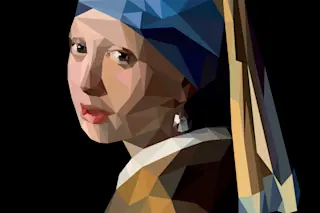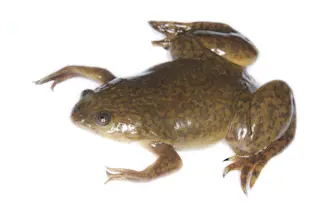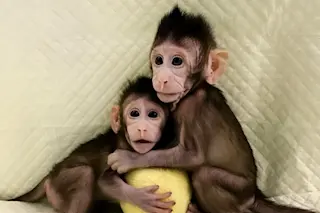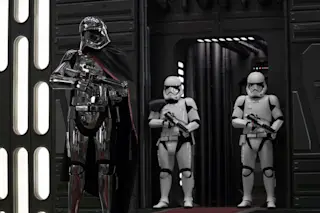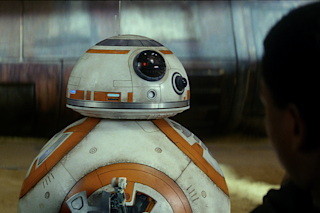Of Doilies and Disease "Everything has its beauty, but not everyone sees it," said Confucius. Two sculptors are uncovering beauty in unexpected places: one by forging the formulas of mathematics into metal constructions, one by weaving the structure of deadly viruses into delicate lace (opposite).
The steel-bronze works of Bathsheba Grossman, a mathematical sculptor from Santa Cruz, California, often depict a "minimal surface," which is the smallest possible area that can occupy a given boundary. A triply periodic shape, like the gyroid above, divides three-dimensional space into equal but tangled halves. Its intricate patterns are common in the microscopic world, from the matrices of liquid crystal molecules (like those in laptop displays) to the intracellular compartments of living organisms.
Brooklyn-based artist Laura Splan also swathes scientific observation in elegance. Inspired by microbiology, Splan has crafted what are perhaps the world's creepiest doilies. Layers of stitches form delicate portraits of pathogens: ...




